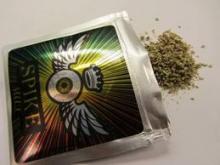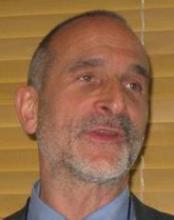STANFORD, CALIF. – Dr. Leslie Gee walked into a local smoke shop near Stanford in May 2012 and bought a packet of synthetic cannabinoids 7 months after California banned similar versions.
That’s just one of many designer drugs that adolescents are using and abusing, with effects that may mimic illicit substances but also can cause unpredictable and sometimes serious adverse effects.
If you don’t ask about it, teenagers probably won’t tell.
Ask adolescent patients, "Are you using anything to get high?" Dr. Gee said at a pediatric update sponsored by Stanford (Calif.) University. Send acutely intoxicated teens to the emergency room or pediatric intensive care unit if needed, or provide supportive care and monitor them.
Call the American Association of Poison Control Centers help line at 800-222-1222 if you’re confused about what’s happening, and give the phone number to parents and families before they might need it, added Dr. Gee, a pediatrician at the university whose clinical focus is adolescent medicine.
A July 2012 federal law placed many synthetic cannabinoid ingredients into schedule I of the Controlled Substances Act, but manufacturers keep changing the ingredients, so they still can be bought legally.
Synthetic cannabinoids are available in shops and on the Internet, and adolescents are using them. In 2011, 11% of 12th graders reported using synthetic cannabinoids and 36% reported using marijuana, according to an annual survey of 50,000 teenagers by researchers at the University of Michigan.
The survey found that 7% of eighth graders and 3% of 12th graders abused inhalants in 2011. Prescription medications were abused by 15% percent of 12th graders. A total of 6% of 10th graders and 5% of 12th graders tried to get high from dextromethorphan, an ingredient in many over-the-counter cold medications that’s also sold as a powder online. About 6% of 12th graders tried chewing or smoking salvia, an herb in the mint family sold in smoke shops and on the Internet. There are no data yet on abuse of some of the newer designer drugs, such as so-called "bath salts," said Dr. Gee, who also is a postdoctoral research fellow in psychiatry and behavioral science.
Some of these substances can’t be detected by urine drug screens. But a laboratory screen for substance abuse generally is fairly useless in adolescents anyway, whether you’re concerned about legal or illegal drugs, Dr. Seth D. Ammerman said in a separate presentation at the meeting.
"Kids are a step ahead," said Dr. Ammerman, an adolescent medicine expert and medical director of the Teen Health Van at the university. "You can get a lot more out of a history than a drug screen."
Mnemonics such as HEADSSS, SBIRT, and CRAFT can help remind physicians about questions to ask when screening for substance abuse, but make sure any particular tool has been tested in teenagers before adopting it, he advised.
Most important, make substance abuse screening part of your routine, he urged. Screen for tobacco use at all adolescent encounters. Screen all adolescents for substance use at visits for preventive services. And screen for substance use in higher-risk patients, including teens brought in by parents because of behavioral issues or school problems, adolescents with acute medical problems such as GI disturbances or trauma, teens seen in emergency departments for any reason but especially for trauma, and residents of group homes, juvenile hall, foster homes, or shelters.
"We still have a ways to go to figure out the best way to screen adolescents for substance use. There’s much active research and some useful tools, but none include every question" that you may want to ask, Dr. Ammerman said.
A common way to start is the HEADSSS assessment, with questions about home; education or work; activities; drugs, alcohol and tobacco; sexuality; sadness; depression or suicidal ideation; and safety.
The SBIRT – Screening, Brief Intervention, and Referral for Treatment – doesn’t address tobacco use, but if you routinely screen for tobacco as a vital sign, you’ll have that covered, Dr. Ammerman said. Under SBIRT, ask if the patient has drunk alcohol, smoked marijuana, or used any other substance to get high including illicit drugs, over-the-counter preparations, prescription medications, inhalants, herbs, or plants.
If the patient says, "No" to all three questions, praise the patient and continue to encourage abstinence, he said. If there’s a "Yes" response, perform the CRAFFT screen for alcohol and drug use, Dr. Ammerman suggested. The acronym stands for Car, Relax, Alone, Forget, Friends/family, and Trouble. Have you driven or ridden in a Car in which anyone was high? Have you used substances to Relax or feel better about yourself? Have you used substances Alone? Ever done anything under the influence of substances that you Forgot? Have Friends or family commented on your use? Have you had any Trouble with parents, school, police, etc., related to substance use?


